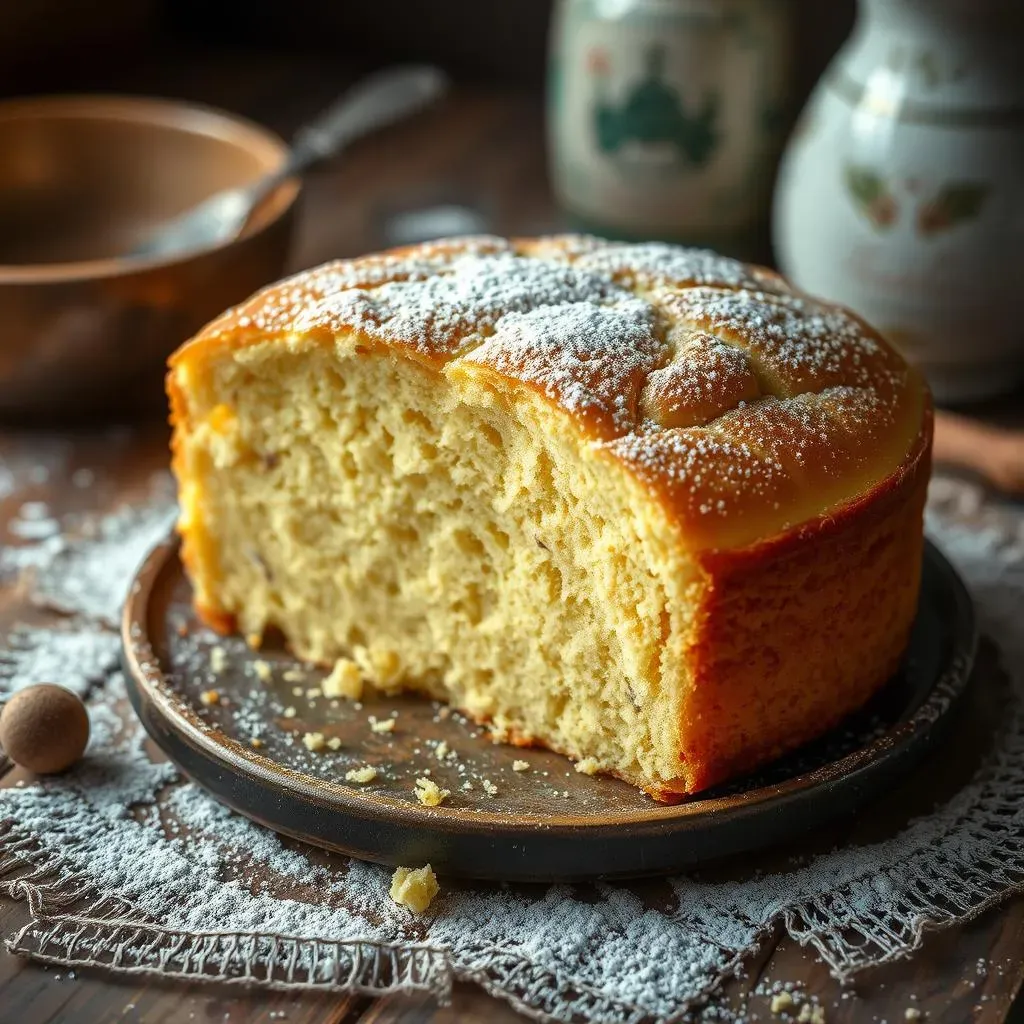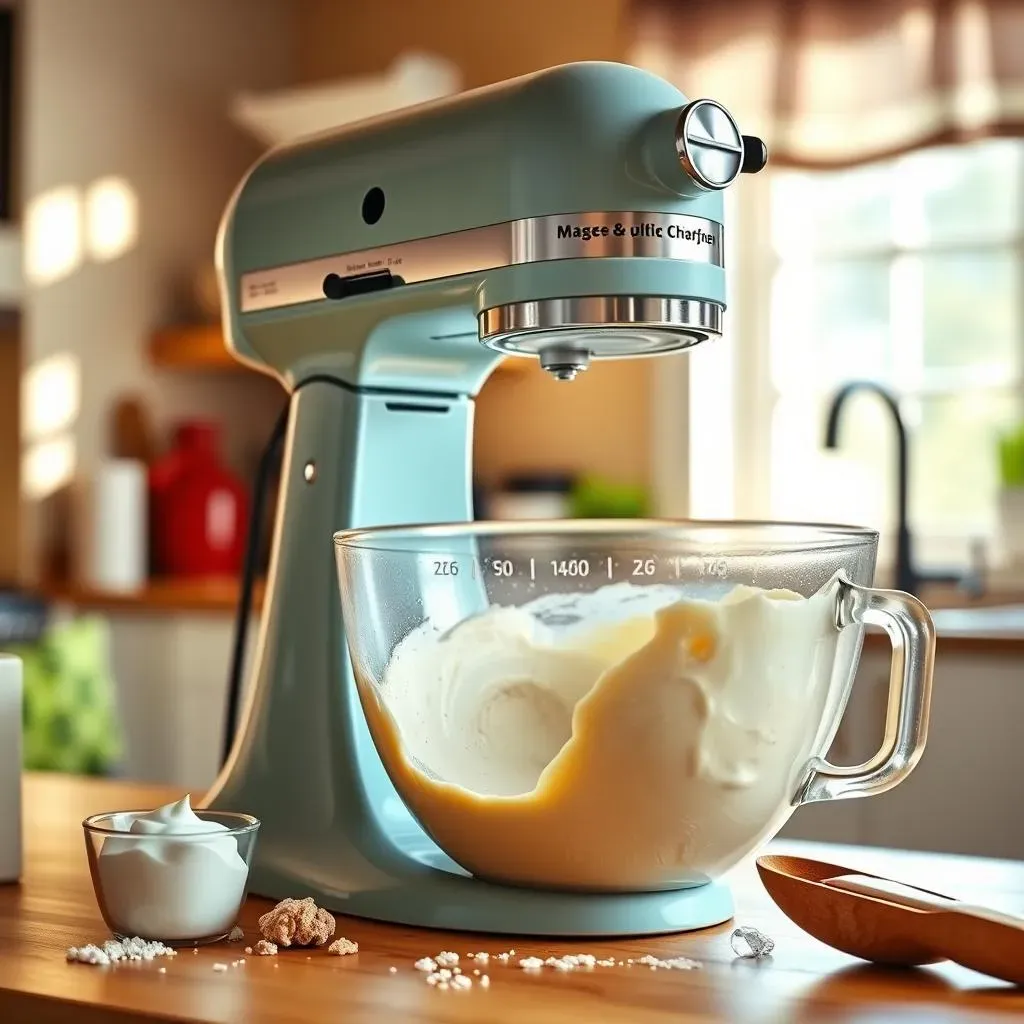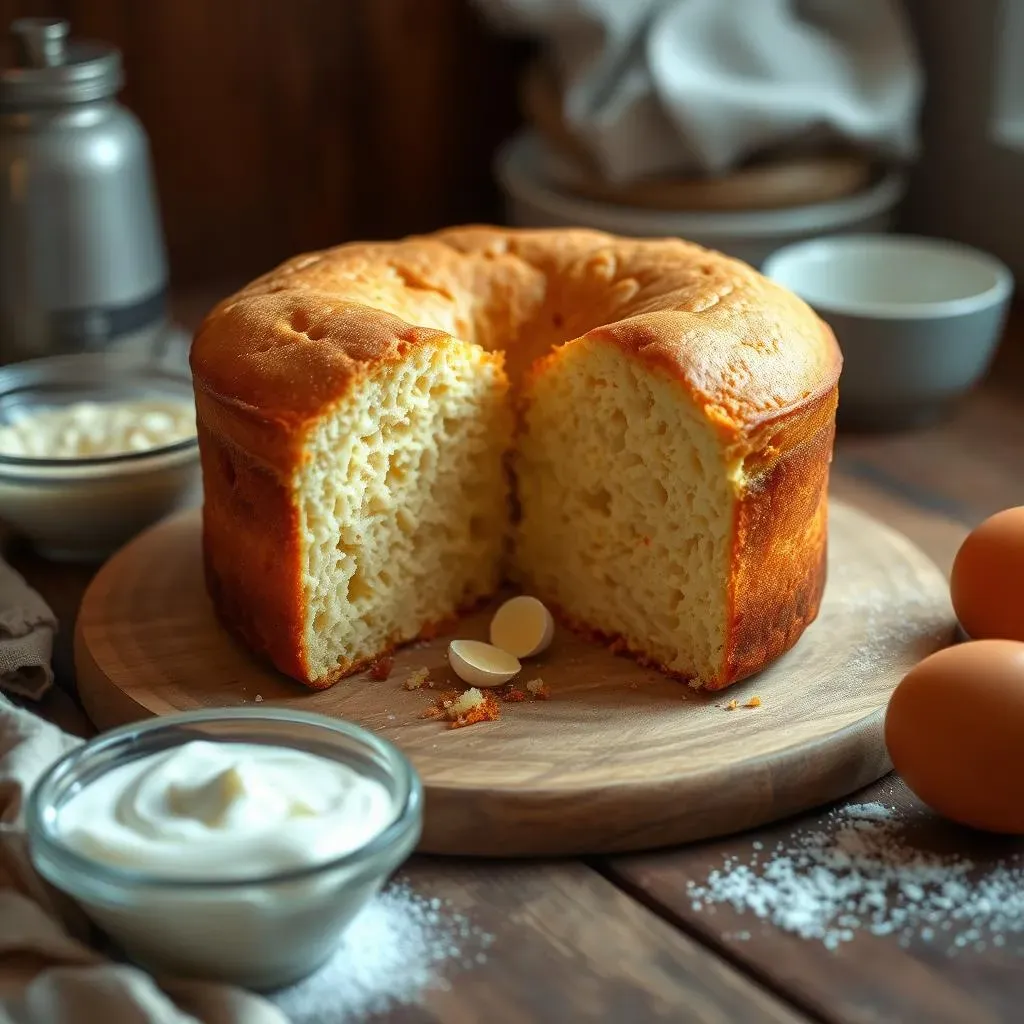Table of Contents
Ever wonder how to make a box cake taste like it came from a fancy bakery? The secret ingredient might just be sitting in your fridge: sour cream! It's not just for tacos, folks. This magical stuff can transform a humble cake mix into a moist, dense, and utterly delicious dessert. But how exactly do you use it? That's what we're here to figure out. This article will guide you through the ins and outs of using sour cream in your cake mix. We'll explore why it works so well, how to substitute it for other liquids, and share some sneaky tips and tricks to make your cake the star of any party. If you're ready to elevate your baking game and learn how to substitute sour cream in cake mix, then let's get started!
Why Use Sour Cream in Cake Mix?

Why Use Sour Cream in Cake Mix?
The Moisture Magic
Okay, so you're staring at that box of cake mix, right? It promises a fluffy, delicious cake, but sometimes it falls a little flat—literally. That's where sour cream swoops in like a superhero. It's the secret weapon for adding moisture. The fat content in sour cream helps to create a tender crumb, preventing your cake from becoming dry and crumbly. Think of it like this: the sour cream is like a tiny sponge, holding onto all that delicious moisture and making sure every bite is just as yummy as the last.
Ever had a cake that was so dry it made you want to reach for a glass of water every bite? Sour cream helps avoid that catastrophe. It's not just about adding wetness; it’s about creating a balanced moisture level that makes your cake taste like it's been baked with love and care.
The Density Difference
Beyond moisture, sour cream brings another fantastic quality to the table: density. That means you're going to get a cake that is not only moist but also has a satisfying weight to it. This is especially useful when you're making a cake that needs to be stacked or carved. A denser cake is less likely to crumble or fall apart, making it easier to work with. It's like adding a bit of structure to your cake's personality, giving it the backbone it needs to stand tall and proud.
Have you ever tried to frost a cake that's just too light and airy? It's a disaster waiting to happen! Sour cream helps to avoid this by giving the cake a sturdy, reliable texture.
Benefit | Description |
|---|---|
Moisture | Keeps cake tender and prevents dryness. |
Density | Creates a sturdier cake, great for stacking and carving. |
Flavor | Adds a subtle tang that enhances overall taste. |
Flavor Boost and Tang
Finally, let’s not forget the flavor! Sour cream isn't just about texture; it adds a subtle tang that enhances the overall taste of your cake. It's a little bit of a secret weapon, making your cake taste richer and more complex. The slight acidity also works wonders with chocolate and vanilla flavors, making them pop even more. Think of it as a tiny bit of magic that elevates your cake from 'good' to 'amazing'.
It's like adding a secret ingredient that makes everyone wonder what your secret is. That little tang isn't overpowering, but just enough to make people go "Wow, this cake is something special!"
How to Substitute Sour Cream for Liquids in Cake Mix

How to Substitute Sour Cream for Liquids in Cake Mix
The Swap Strategy
Alright, so you're ready to ditch some of the liquid called for in your cake mix and bring in the sour cream. That's a great idea. The most common method is to replace some or all of the water, milk, or oil in your recipe with an equal amount of sour cream. For example, if your cake mix calls for one cup of water, you could try using one cup of sour cream instead. But here's the thing: not all cake mixes are created equal. Some might need a little more or a little less sour cream to achieve the perfect consistency. So, it's a bit of a balancing act, but we are here to help you.
I would suggest starting by replacing half of the liquid with sour cream and see how the batter looks. If it seems too thick, you can always add a little more of the original liquid. If it looks too thin, add a bit more sour cream. It's like conducting a little science experiment in your kitchen, but the reward is a delicious cake! Do not be afraid to experiment!
Finding the Right Ratio
Now, let's talk about ratios. While a 1:1 substitution works in many cases, sometimes you need to tweak it. For a richer, denser cake, you can replace all of the liquid with sour cream. But, if you prefer a lighter cake, try substituting only half. If you're using a cake mix that already has a lot of oil, you might want to start with a smaller amount of sour cream. It really depends on the specific cake mix and your preference.
A good rule of thumb is to start with replacing half the liquid with sour cream. Then, check the batter's consistency. It should be smooth and pourable, but not too runny. If it's too thick, add a tablespoon of the original liquid at a time until you reach the desired consistency. Remember that baking is not an exact science, sometimes you need to trust your instincts.
Substitution Level | Resulting Cake |
|---|---|
Replace half of the liquid | Moist, slightly denser cake |
Replace all of the liquid | Very moist, dense cake |
Add sour cream in addition to the liquid | Extra moist, very rich cake (use sparingly) |
Tips and Tricks for Baking with Sour Cream Cake Mix

Tips and Tricks for Baking with Sour Cream Cake Mix
The Temperature Tango
Okay, let's talk temperature. It's a bit of a Goldilocks situation with sour cream cake mix. If your sour cream is too cold, it can cause your batter to seize up and become lumpy. Nobody wants a lumpy cake! So, before you even think about cracking an egg, take your sour cream out of the fridge and let it sit on the counter for about 30 minutes. You're not trying to make it warm, just take the chill off. This little step will make a big difference in how smoothly the sour cream incorporates into your batter. Trust me, your cake will thank you.
Also, make sure your other ingredients are at room temperature too! It's like a little dance party in your mixing bowl, and everyone needs to be ready to groove at the same pace. If your ingredients are all different temperatures, they won't blend together as well, and that can affect the final texture of your cake. Consistency is key, my friend.
Mix-In Magic
Now that you've mastered the temperature tango, let's move on to mix-ins. Sour cream is a great base for all kinds of flavor additions. Want to give your cake a citrusy twist? Add a tablespoon of lemon or orange zest. How about a little extra chocolate punch? Stir in some chocolate chips or cocoa powder. The possibilities are endless! But, like a good DJ, you need to know when to stop. Don't go overboard with the add-ins. Too much of a good thing can actually make your cake heavy and dense. So, keep it reasonable, and let the sour cream shine.
One of my favorite mix-ins is a teaspoon of vanilla extract. It enhances the flavor and makes your cake taste like it was made from scratch. And don't forget about spices! A dash of cinnamon or nutmeg can turn your cake into a cozy, comforting treat. It's all about experimenting and finding what you like best.
Tip | Description |
|---|---|
Room Temp Ingredients | Bring sour cream and eggs to room temperature for smooth batter. |
Don't Overmix | Mix until just combined to avoid a tough cake. |
Flavor Boost | Add extracts, zests, or spices for extra flavor. |
The Baking Balance
Alright, you've got your batter ready to go, but don't just throw it in the oven and hope for the best! Pay attention to your baking time and temperature. Because sour cream adds moisture, your cake might take a little longer to bake than usual. Start checking it a few minutes before the recipe calls for, and use a toothpick to see if it's done. If the toothpick comes out clean, you're good to go! If not, bake it for a few more minutes, and then test it again. Also, don't open the oven door too often, or you'll let all the heat out and your cake will take longer to bake. Be patient, and your cake will come out perfect.
And here's a pro tip: if you're baking a cake with a lot of sour cream, you might want to lower the oven temperature by 25 degrees. This will help your cake bake evenly and prevent it from getting too dark on top. It's all about finding that sweet spot where your cake is perfectly baked, moist, and delicious. Baking is a bit of an art and a science.
Cooling and Care
Finally, once your cake is out of the oven, let it cool in the pan for about 10 minutes before inverting it onto a wire rack to cool completely. This prevents the cake from breaking or crumbling. And once your cake is completely cool, wrap it tightly in plastic wrap to keep it fresh and moist. Don't put it in the fridge until you're ready to frost it. This is because refrigeration can dry out the cake. Now, go ahead and frost your cake and enjoy your delicious creation! You did great!